
To obtain high-resolution stamp images for media use, please email mark.r.saunders@usps.gov.
WASHINGTON — Five lighthouses that for centuries enabled sailors to safely navigate the waters along the northeastern United States stand tall on postage Saturday, July 13, with the issuance of the New England Coastal Lighthouse Forever stamps. Customers may purchase the New England Coastal Lighthouses Forever stamps now at usps.com/stamps, or at 800-STAMP-24 (800-782-6724) for delivery by mail early next week. The stamps will be available in Post Offices nationwide Saturday.
The sixth issuance in the popular U.S. Postal Service lighthouse series features five New England Coastal Lighthouses: Portland Head (Cape Elizabeth, ME); Portsmouth Harbor (New Castle, NH); Boston Harbor (Boston, MA); Point Judith (Narragansett, RI) and New London Harbor (New London, CT). Visit usps.com/lighthouses to view videos of the five lighthouses.
“We are proud to celebrate New England’s lighthouses, which have been guiding ships and guarding the coastline for almost 300 years,” said U.S. Postal Service Governor Dennis Toner, who will dedicate the stamps Saturday at the Portland Head Light. “As some of America’s oldest lighthouses, they continue a tradition going back to ancient civilizations, when early sailors relied on light from the shore to navigate waters.”
“Our stamp images capture each structure’s sense of majesty, along with the mysterious qualities that invite us to take a closer look,” he added. “And don’t forget, these Forever stamps can be used anytime in the future to mail First-Class letters, regardless of price changes. These stamps — like the lighthouses they honor — are meant to stand the test of time.”
Admittance is free to the First-Day-of-Issue dedication ceremonies that will take place at 10 a.m. ET at the following locations:
- Portland Head Light, 1000 Shore Rd., Cape Elizabeth, ME
- Portsmouth Harbor Lighthouse, 25 Wentworth Rd., New Castle, NH
- Boston Lighthouse event: Although the Boston Light is located in Boston Harbor, the dedication ceremony will take place at 191 Atlantic, Ave., on Rose Kennedy Greenway between Faneuil Hall and the Boston Harbor Hotel.
- Port Judith Lighthouse, 1470 Ocean Rd., Narragansett, RI
- New London Light ceremony to take place at the New London Maritime Society, 150 Bank St., New London, CT
The stamp art for each of the lighthouses is a painting based on contemporary photographs. The New England Coastal Lighthouses Forever stamps were designed by art directors Howard E. Paine of Delaplane, VA, and Greg Breeding of Charlottesville, VA, painted by artist Howard Koslow of Toms River, NJ.
In addition to many other stamp projects, Koslow has produced the art for the entire Lighthouses series: the five lighthouses in the 1990 stamp booklet; the Great Lakes Lighthouses stamps issued in 1995; the Southeastern Lighthouses stamps in 2003; the Pacific Lighthouses stamps in 2007; and the Gulf Coast Lighthouses stamps in 2009.
Portland Head
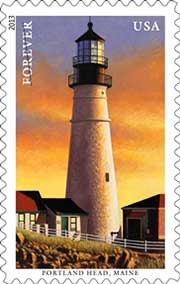
Maine’s oldest lighthouse, Portland Head was established in 1791. The construction of the tower was among the first acts of the Lighthouse Establishment, a federal agency created in 1789. The original rubblestone lighthouse still stands and looks much as it did in the late 1800s. The 80-foot lighthouse had two types of Fresnel lenses during its history, a second-order and a fourth-order.
A Fresnel lens makes it possible to project a relatively low power light source to be seen at great distances. Rated in numerical orders, the first order Fresnel lens was one of the largest and enabled the light from a lighthouse to be seen more than 20 miles away. Depending on the light pattern projected, called the “light signature,” a mariner could navigate by lighthouses. Mainers carried regional light lists to identify lighthouses by the flash pattern such as the time between flashes. Similarly, during fair weather and daylight conditions, a mariner could also navigate by distinct patterns or colors painted on a lighthouse, known as “day marks.”
The Portland Head lighthouse was automated in 1989, and a modern DCB-224 optic (high powered rotating spotlight) installed. A beautiful Victorian keepers’ duplex, built on the station in 1891, now houses the Museum at Portland Head Light. The lighthouse has been listed on the National Register of Historic Places since 1973 and is owned and managed by the Town of Cape Elizabeth, ME.
The tower and the keepers' house together are considered one of the most beautiful stations in the U.S., and they are among the most frequently photographed subjects in Maine.
Portsmouth Harbor
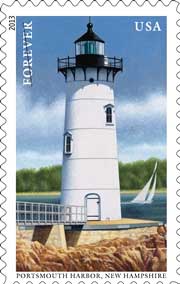
The first navigational aid in New Hampshire was established in Portsmouth Harbor, the state’s only deep-water port. Although citizens had demanded a lighthouse as early as 1721, it was not until 50 years later that the Portsmouth Harbor’s first beacon was lit. An iron lantern topped the 50-foot shingled tower; three copper lamps provided the light. The 1771 tower was replaced in 1804 by another tower constructed of wood, located some 100 yards to the south of the original site.
When the second wooden tower succumbed to deterioration, a new 48-foot tower of bolted cast-iron plates was built on its foundation. It was actually assembled inside the old structure, which was dismantled after construction.
Managed by the Friends of Portsmouth Harbor Lighthouses, the 1878 lighthouse still stands on the northeast point of Great Island on the Piscataqua River in New Castle. It retains its fourth-order Fresnel lens. The lighthouse was automated in 1960 and has been on the National Register of Historic Places since 2009.
Boston Harbor

Commonly called the Boston Harbor Light, North America’s first true light station, was built in 1716 at the urging of the city's business community. Three years later a cannon — America’s first fog signal — was added to the light station. During the Revolutionary War, as British forces abandoned the area in 1776, they demolished the lighthouse by blowing it up. Boston Harbor Light is also commonly called Boston Light.
A new rubblestone tower, 75-feet tall, replaced the destroyed lighthouse in 1783; it was raised an additional 14 feet in 1859, when its current second-order Fresnel lens was also installed. After large cracks appeared in the east wall in 1809, iron hoops were installed for support; aluminum bands replaced the corroded iron in 1973–74.
The lighthouse was designated a National Historic Landmark in 1964. Standing on Little Brewster Island within the Boston Harbor Islands National Recreational Area, it was the last lighthouse in the United States to be automated in 1998 and is the only remaining American lighthouse to have a resident keeper employed by the federal government.
Point Judith
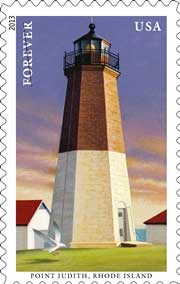
Located at the entrance to Narragansett Bay in Rhode Island, Point Judith Lighthouse guards a particularly dangerous area of the Atlantic. The point, which extends several miles into the Atlantic, has seen many shipwrecks, even after the addition of the lighthouse.
The first lighthouse built on the site, in 1810, was a wooden tower that toppled over in a storm five years later. A second tower, made of sturdier stone, was erected in 1816; its lamps and lenses were operated by clockwork mechanism powered by a 288-pound weight. This 35-foot tower remained in service until 1857, when the current lighthouse was built. The octagonal tower, made from brownstone blocks, stands 51 feet high and boasts a fourth-order Fresnel lens.
Automated in 1954, the lighthouse underwent a major restoration in 2000 using blocks from the same area where the original stone was quarried. The lighthouse stands on the Coast Guard Station Point Judith and has been listed on the National Register of Historic Places since 1988.
New London Harbor
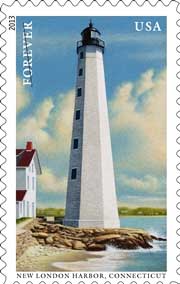
Connecticut’s oldest and tallest lighthouse, New London Harbor Lighthouse, was originally established in 1761. Financed by a lottery held by the Connecticut colonial legislature, the first lighthouse was a 64-foot tower that included a wooden lantern.
The tower developed a crack and was replaced in 1801 by the present lighthouse. New London Harbor was one of the earliest American lighthouses with a flashing light, added in 1801 to distinguish it from the lights of nearby homes.
The octagonal brownstone structure is 89 feet high and retains its fourth-order Fresnel lens, which was installed in 1857. The lighthouse was automated in 1912, and the keepers’ house was sold. In 1990 it was listed on the National Register of Historic Places. Though the keepers’ house is privately owned, the New London Maritime Society acquired the lighthouse in 2010.
For more information on preserving America's lighthouses, contact the U.S. Lighthouse Society, uslhs.org.
Many of this year’s other stamps may be viewed on Facebook at facebook.com/USPSStamps, via Twitter @USPSstamps or at beyondtheperf.com/2013-preview.
First-Day-of-Issue Postmarks
Customers have 60 days to obtain the first-day-of-issue postmarks by mail. They may purchase stamps at a local Post Office, The Postal Store at usps.com/stamps, or by calling 800-STAMP-24. Customers should affix the stamps to envelopes of their choice, address the envelopes to themselves or others and place them in larger envelopes addressed to:
New England Coastal Lighthouses (Portland Head) Stamps
Postmaster
125 Forest Ave.
Portland, ME 04101-9998
New England Coastal Lighthouses (Portsmouth Harbor) Stamps
Postmaster
73 Main St.
New Castle, New Hampshire 03854-9998
New England Coastal Lighthouses (Boston Harbor) Stamps
Postmaster
25 Dorchester Ave., Rm. 3011
Boston, MA 02205-9600
New England Coastal Lighthouses (Port Judith) Stamps
Postmaster
551 Kingstown Rd.
Wakefield, RI 02789-9998
New England Coastal Lighthouses (New London Harbor) Stamps
Postmaster
27 Masonic St.
New London, CT 06320-9998
After applying first-day-of-issue postmarks, the Postal Service will return the envelopes through the mail. While the first 50 postmarks are free, there is a 5-cent charge per postmark beyond that. All orders must be postmarked by Sept. 13, 2013.
First-Day Covers
The Postal Service also offers first-day covers for new stamp issues and Postal Service stationery items postmarked with the official first-day-of-issue cancellation. Each item has an individual catalog number and is offered in the quarterly USA Philatelic catalog, online at usps.com/stamps or by calling 800-782-6724. Customers may request a free catalog by calling 800-782-6724 or writing to:
United States Postal Service Catalog Request
PO Box 219014
Kansas City, MO 64121-9014
Philatelic Products
Nine philatelic products are available for these stamps:
471206, Press Sheet with Die Cuts, $55.20 (print quantity of 2,500).
471208, Press Sheet without Die Cuts, $55.20 (print quantity of 2,500).
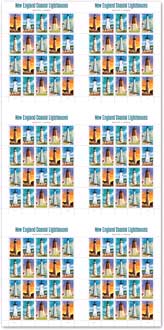
471210, Keepsake (Pane and Digital Color Postmark Set of 5), $17.95.
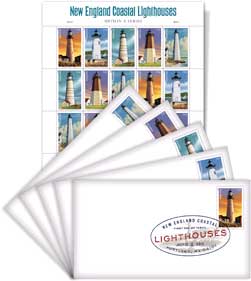
471216, First-Day Cover Set of 5, $4.50.
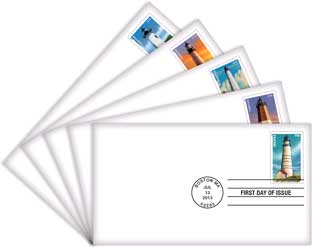
471221, Digital Color Postmark Set of 5, $8.05.

471223, Notecards, $15.95.

471230, Ceremony Program (random single), $6.95.
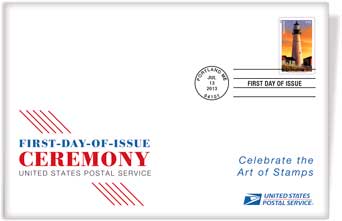
471231, Stamp Deck Card, $0.95.
471232, Stamp Deck Card with Digital Color Postmark (random single), $1.96.
# # #
Please Note: For broadcast quality video and audio, photo stills and other media resources, visit the USPS Newsroom at about.usps.com/news/welcome.htm.
For reporters interested in speaking with a regional Postal Service public relations professional, please go to about.usps.com/news/media-contacts/usps-local-media-contacts.pdf.
A self-supporting government enterprise, the U.S. Postal Service is the only delivery service that reaches every address in the nation: 152 million residences, businesses and Post Office Boxes. The Postal Service receives no tax dollars for operating expenses and relies on the sale of postage, products and services to fund its operations. With more than 31,000 retail locations and the most frequently visited website in the federal government, usps.com, the Postal Service has annual revenue of more than $65 billion and delivers nearly 40 percent of the world's mail. If it were a private-sector company, the U.S. Postal Service would rank 42nd in the 2012 Fortune 500. The Postal Service has been named the Most Trusted Government Agency for seven years and the fourth Most Trusted Business in the nation by the Ponemon Institute.
Follow the Postal Service on twitter.com/USPSStamps and like us at facebook.com/USPS Stamps.
